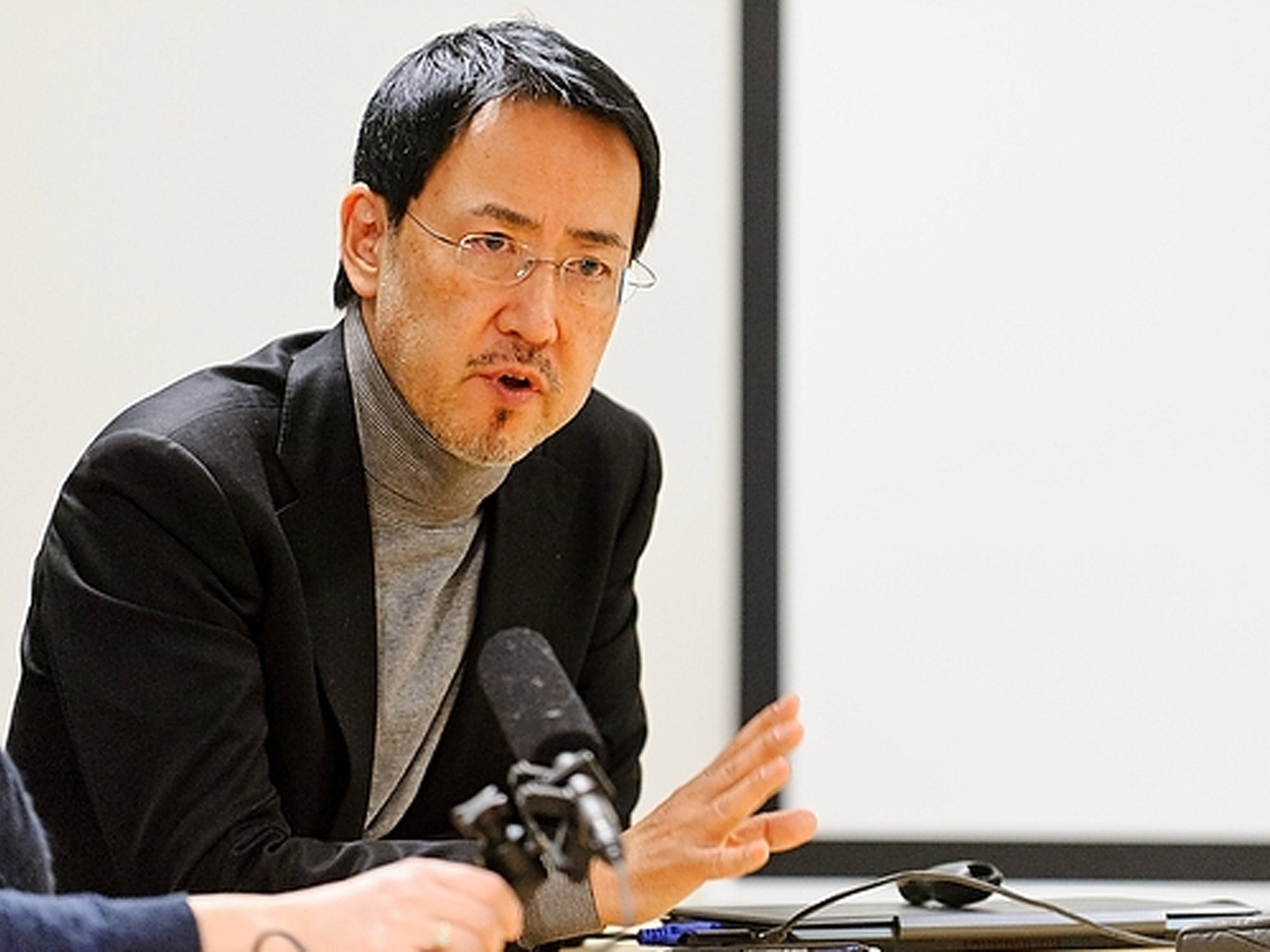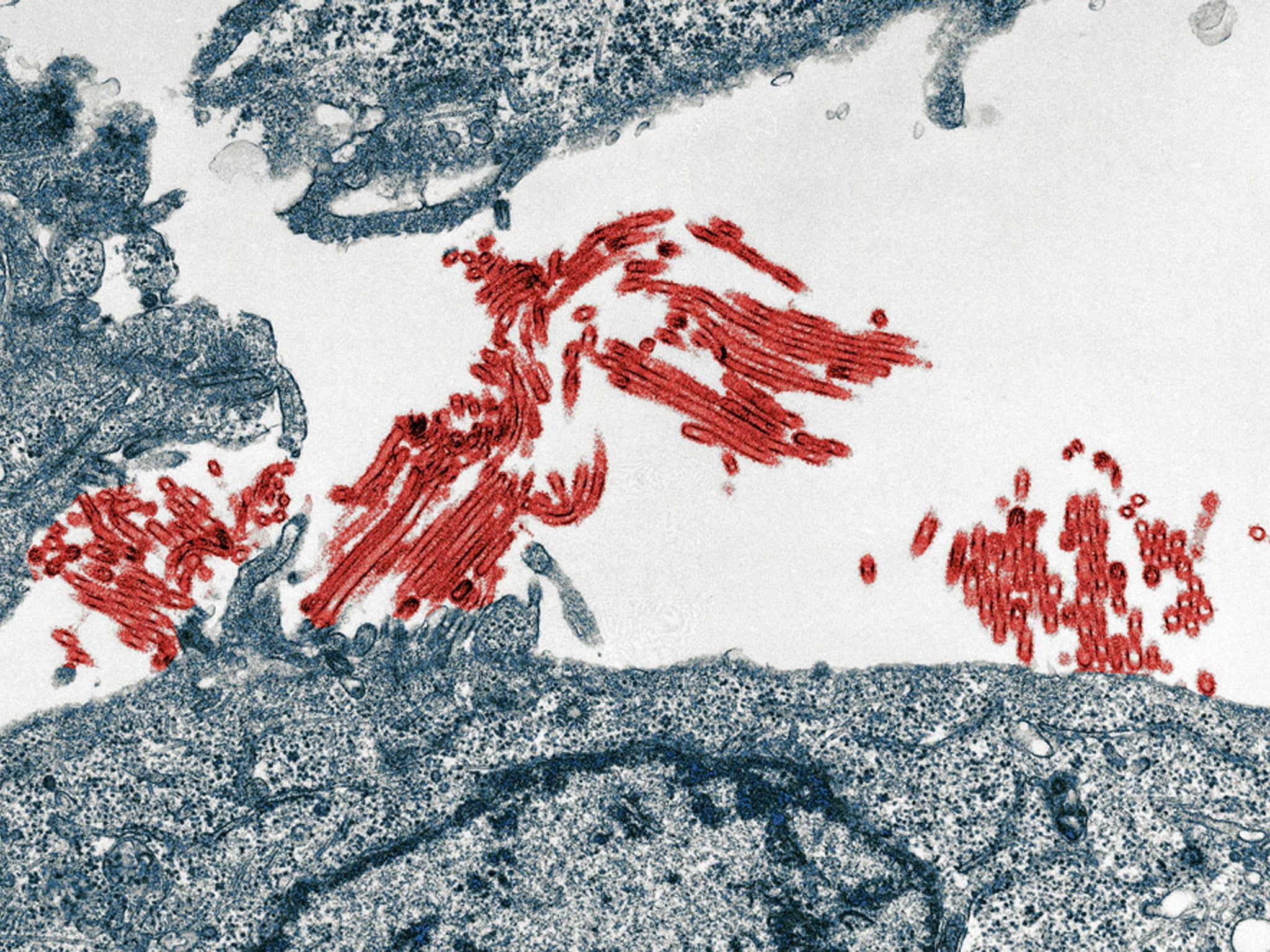Controversial American scientist Yoshihiro Kawaoka criticised over safety levels of research into pandemic H1N1 flu virus
He created a virus that could render the human immune system defenceless

Senior scientists have criticised an American university for allowing controversial research on enhancing a pandemic strain of flu virus to be undertaken in a laboratory with a relatively low level of biosecurity.
The University of Wisconsin-Madison was labelled irresponsible and negligent for allowing one of its scientists, Professor Yoshihiro Kawaoka, to genetically manipulate pandemic H1N1 flu virus in a laboratory categorised as biosafety level-2 (BSL-2).
Other experts believe that the research, which involved the creation of a strain of pandemic flu that has “escaped” from the control of the human immune system, should have been done at least at BSL-3 or even BSL-4, the most secure level of biosafety reserved for the most dangerous pathogens.
When pandemic H1N1 emerged in 2009 it killed between 151,000 and 540,000 people in the first year of the outbreak. Since then, most people have acquired a level of antibody immunity to the virus, which is now classified as “seasonal flu”.
The Independent revealed yesterday that Professor Kawaoka has for the past four years been working on ways of mutating the 2009 pandemic strain of H1N1 flu so that it is no longer neutralised by the antibodies that provide immunity for the wider population.
Rebecca Moritz, who is responsible for overseeing the work on “select agents” at Wisconsin said that it is normal for such work on flu viruses to be done at BSL-2, which covers work on viruses and bacteria that cause only mild disease in humans or are difficult to pass on through airborne transmission.
“The 2009 pandemic strain of influenza is studied in many laboratories across the world. It is easily isolated from anyone who gets sick with influenza virus during the flu season. The appropriate biosafety level for this virus is BSL-2,” Ms Moritz said.
However, leading experts in infectious diseases were amazed to discover that this work was carried out in a BSL-2 laboratory with only relatively minor precautions against accidental releases compared to the two highest levels of biosafety.
“That would be incredible if true because a modified virus that evades available protective immunity clearly mandates much greater biosafety,” said Professor David Relman of Stanford University in California, a member of the US’s National Science Advisory Board for Biosecurity.
“If real, this work is irresponsible, and unduly places humanity at risk of death and illness. The apparent lack of common sense and insensitivity to our responsibility as scientists to do no harm, is striking. It would seem that this area of research is now an unregulated free for all,” Professor Relman said.
Professor Richard Ebright, a molecular biologist at Rutgers University in New Jersey, said that the research threatens to undermine efforts to control influenza rather than to help to curb future flu pandemics.
“If the reports are correct, Kawaoka, single-handedly, has rendered useless the billions of dollars and millions of person-hours expended in mass vaccination against the 2009 pandemic influenza virus and, single-handedly, has placed millions of lives at risk,” Professor Ebright said.
“Incredibly, the ‘research’ is reported to have been performed at biosafety level 2, the same biosafety level as a physician's or dentists's office: no required biosafety protections beyond an open cabinet, gown, and gloves,” he said.

Professor Sir Andrew McMichael, a vaccine expert at Oxford University, said that there are mounting concerns about this kind of work and there needs to be a wider debate between flu scientists, funding bodies and biosafety experts.
“It’s very disturbing and poses real risks that do not seem to be appreciated fully by those involved. Is it really being done at BSL-2? That seems unbelievable,” Sir Michael said.
However, Professor Wendy Barclay, a flu researcher at Imperial College said there was nothing wrong with Professor Kawaoka carrying out his research in a BSL-2 lab. “In nature there is no containment. He’s only doing what happens in nature every day,” Professor Barclay said.
Professor Simon Wain-Hobson, a virologist at the Pasteur Institute in Paris, said that the work has a dual function because it is about enhancing the genetic make-up of a human infectious agent, and the research should therefore only be done, if it is done at all, at the highest biosafety levels.
“If it escaped it would be equivalent to a new pandemic virus. It seems there was a tremendous lack of oversight in the funding and execution of this research at Wisconsin,” Professor Wain-Hobson said.
Video: Chief Medical Officer for England calls for new antibiotics
The four categories of biosafety level for laboratories
Biosafety level-1 (BSL-1)
For work on bacteria and viruses that do not generally cause disease in healthy adults. Precautions, such as washing hands with anti-bacterial soaps, are minimal and the work can be done on an open bench-top.
Biosafety level-2 (BSL-2)
For infectious agents with a moderate hazard to health or the environment, such as viruses or bacteria that cause mild disease in humans or are difficult to contract by airborne transmission. Gloves and gowns.
Biosafety level-3 (BSL-3)
This is for agents that can cause severe or fatal diseases in humans, such as plague, yellow fever and West Nile virus. Requires protective clothing and fume cupboards where the work is carried out.
Biosafety level-4 (BSL-4)
The highest level of safety for the most dangerous pathogens, such as Ebola, Marburg and Lassa viruses. Measures include high-security buildings, multiple showers, positive-pressure personnel suits and air filters.
Join our commenting forum
Join thought-provoking conversations, follow other Independent readers and see their replies
Comments